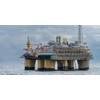Propane’s Economic Edge for Ports During Trade Uncertainty

Trade has been a rollercoaster recently. Between the unpredictability of tariffs and uncertain economic outlooks, ports have faced big swings in trade volume as well as pressure to do more with less. Operational efficiency and cost control are critical, which is why propane continues to emerge as a cost-effective, dependable energy solution that offers significant economic advantages for port terminal operators looking to stay ahead during uncertain times.
Lower and More Predictable Fuel Costs
One of the largest variable costs in port operations is fuel. Diesel and gasoline prices can be heavily impacted by the global oil market, which can be affected by several factors like international conflicts, policy changes, tariffs, and more. Propane, on the other hand, is predominantly produced domestically here in the United States, so it benefits from a more stable supply chain and fewer price fluctuations. Compared to diesel and gasoline, propane helps protect ports from sharp price spikes that can quickly consume their annual fuel budget for the year. Propane suppliers can also offer port operators mutually beneficial long-term fuel contracts, improving budget predictability and planning. And on a per-gallon basis, propane usually beats the price of diesel, sometimes by as much as 50 percent.
West Basin Container Terminal (WBCT) at the Port of Los Angeles has been running propane terminal tractors for over 20 years, and after switching from diesel to propane, the terminal went from $1,519.217 in annual diesel costs to $1,150,922 in annual propane costs. That’s around a 25 percent savings that the port could reinvest in its operations.
The upfront investment cost in propane equipment also tends to be lower than new electric equipment. Based on a 2021 assessment of the San Pedro Bay terminals at the Ports of Los Angeles and Long Beach, the purchase price for near-zero emission propane terminal tractors is significantly lower than electric tractors at approximately $150,000 in comparison with electric’s $320,000 per unit.
Reduced Infrastructure and Maintenance Costs
Propane refueling infrastructure also tends to cost much less than electric, which may require recharging stations and grid upgrades. Propane infrastructure is cost effective, scalable, and quick to deploy. Not only can large operations store over 100,000 gallons of propane on-site, but refueling stations can be installed with a relatively low upfront investment and scaled to meet port-specific needs. Propane also doesn’t degrade over time like gasoline and diesel, so large reserves can be stored for long periods.
Propane engines also generally require less maintenance than diesel engines. For example, there’s no need for expensive aftertreatment systems such as diesel exhaust fluid or diesel particulate filters. This further reduces long-term maintenance costs on parts and labor, as well as less vehicle maintenance downtime.
Improved Equipment Uptime and Productivity
With a volatile trade environment, there have been periods of record volume flowing through ports. For example, July 2025 was the busiest month on record at the Port of Los Angeles. Getting ships unloaded quickly and efficiently is critical, and equipment downtime is a hidden cost that can disrupt schedules and erode profit margins.
Propane-powered equipment can perform all day, carrying heavy loads without loss of power or speed. Today’s propane terminal tractors are currently the only near-zero emission fuel technology platform capable of meeting marine terminal operators’ endurance needs — traveling consistent speeds and distances no matter the cargo weight.
Meanwhile, a single propane cylinder can power a forklift for an entire eight-hour shift without losing power or speed. Cylinders can also be swapped out in a matter of minutes. On the contrary, most electric batteries cannot last for a whole shift, requiring operators to stop and recharge or swap out a battery. This higher uptime and faster turnaround for propane material handling equipment means more efficient operations, better use of labor resources, and increased output.
Energy Security and Operational Resilience
Another major factor with the potential to disrupt operations is electrical grid instability. And increased power demand, aging infrastructure, and severe weather are making power outages more common by the day. The risk of electric grid failures is particularly concerning for ports located in large population centers where electricity demand is high and in regions with higher risk of natural disasters. According to a recent report from the Department of Energy, blackouts in the U.S. could increase by 100 times by 2030 if nationwide electrical infrastructure isn’t expanded and upgraded. For ports, grid outages can disrupt communications, IT systems, and other essential services, in addition to preventing electric terminal tractors and forklifts from recharging.
Propane provides ports with an off-grid solution that reduces dependency on the grid. With onsite propane storage and backup propane-powered generators, microgrids, and shore power, ports can keep critical electric systems running even when the grid goes down. Likewise, while propane-powered equipment is completely protected from grid disruptions, even electric forklift and terminal tractor fleets can benefit from propane-powered EV charging capabilities.
Weathering the Waves of Global Trade
As economic uncertainties and tariff whiplash continue to affect the volume of goods coming into U.S. ports, controlling costs and maximizing efficiency are critical for maintaining port operations. Propane power is one way in which ports can achieve lower and more predictable fuel costs, affordable infrastructure, minimal maintenance downtime, and resilience during power disruptions.
Whether ports have been utilizing propane equipment for decades or are looking to upgrade their operation, propane is a strategic asset that can help ports weather whatever global trade has in store.
















 August 2025
August 2025



